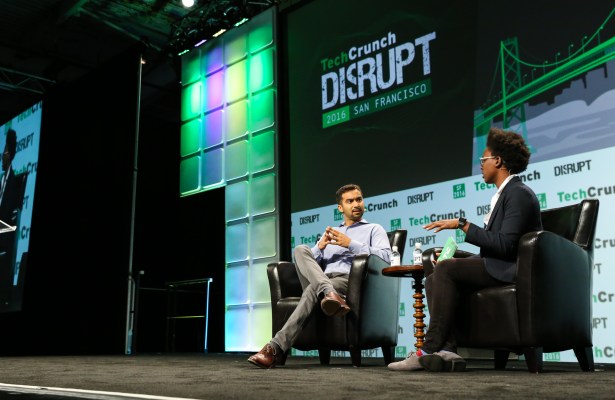Instacart COO Ravi Gupta will say that a bad day working in the on-demand economy can be plenty demoralizing even if offset by good well-paid days, and Instacart is going to be making some changes in order to even things out.
Today, the company said it is removing its tipping option in favor of raising guaranteed delivery rates for its shoppers. Instead of shoppers relying on something around $5 per delivery plus tips, shoppers will now probably make somewhere around $10-12 per delivery, Gupta said, though the final value will depend on the market. The goal of the change, Gupta says, is to smooth out the earnings curve for shoppers and make it less reliant on spikes in tips.
“Our current structure has shoppers being really reliant on tips for earnings,” Gupta said. “It could work better for our shoppers. The reason is, 20% of our customers don’t tip. That’s a really tough experience of or shoppers.”
In addition, to continue smoothing out that earnings curve, Instacart is going to start estimating the future earnings of shoppers based on the amount of time they are expected to work. That information is based on their previous delivery history among other factors. That change is geared toward giving shoppers a better way to plan out their weeks in order to make the money that they are looking to make.
In lieu of tipping, but still looking to continue rewarding the company’s best shoppers, the top 20% of the highest-rated shoppers will be receiving a $100 bonus at the end of the week. Adding a level of competitiveness might end up making things more demoralizing or difficult for shoppers, but Gupta said that because shoppers are working independently of each other, it isn’t something that they expect to have an impact on shopper behavior.
“It’s important for us to always consider the impact these things will have on the shoppers,” Gupta said. “What I would tell you, we don’t anticipate [over-competitiveness]. The way to do it, you don’t have to do anything to earn a 5-star rating that requires you to be competitive with someone else. You just have to deliver a great customer experience. This is more in recognition of things our shoppers are already doing rather than trying to fundamentally change behavior.”
All these changes appear to be attempting to do two things: keeping shoppers — especially the best ones — working on Instacart, and trying to streamline the delivery process by encouraging shoppers to do more deliveries and get a guaranteed rate. By doing that, Instacart can not only pull back on its needs to acquire new shoppers, but encourage shoppers to try to end up driving more revenue to Instacart. But in cases where shoppers, say savvy ones that know which neighborhoods tip the best or perform better, that are accustomed to large tips might end up in a situation where they end up less. (That’s where the bonus comes in, largely.)
“What we’ve heard from shoppers is the low moments hurt more than the high moments are good,” Gupta said. “The moments of doing delivery and not getting a tip, it hurts more. I don’t think we feel like overall every shopper is gonna make more money by this approach. What we say with confidence is there’s dramatically more consistency and for every delivery I know I’m gonna make a fair amount.”
The on-demand economy can be seen as a punishing environment with difficult unit economics and high overhead. Instacart is one of the prime examples of an on-demand company, one of the earliest and looking to essentially remake the grocery shopping experience. But instead of just focusing on taking a share of the delivery in addition to grocery store partnerships, the company is looking to start attracting advertising revenue from consumer packaged goods companies.
All this can start driving the cost to the customers further down, and convince them to continue buying things through Instacart. If they can effectively drive that cost to zero, it could make Instacart much more attractive to potential customers and build up a habit within them. CEO Apoorva Mehta laid out the plans at TechCrunch Disrupt SF earlier this month. There, Mehta said he believed the company to being cash-flow positive in the next year.
“We have partnerships with hundreds of retailers who also do a revenue share with us, but we also have CPG companies such as Pepsi, Proctor & Gamble, who promote their products on Instacart,” Mehta said. “As a result of that we have a third source of revenue most people forget about. The key point here is that all on-demand companies do not look the same.”
Still, all of this at the end of the day is to give shoppers more confidence in working with Instacart and continue driving the company forward. There’s a common perception that Instacart is in a tough position (many Silicon Valley watchers will echo the refrain that they are in rough shape), but if it continues to scale, that allows it to better convince new partners, gather more data for its advertising business, and eventually prove to its investors that it can be a strong sustainable business.
